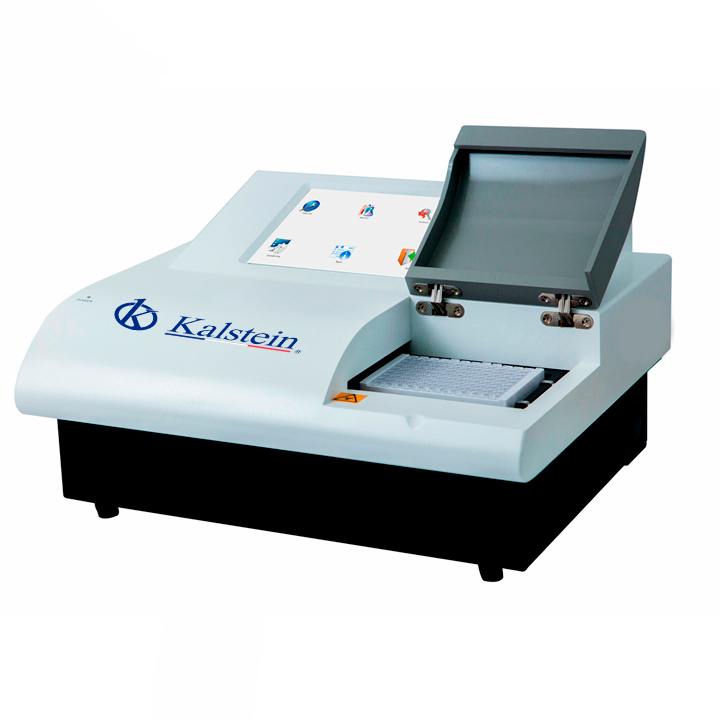An ELISA reader is a specialized spectrophotometer used to read the results of this technique, which is used to determine the presence of specific antibodies or antigens present in a sample. These laboratory equipment allows analyzing 96 wells or more with samples, so their use is very favorable to the laboratories, reducing reagents and samples used which leads to better performance.
ELISA is a technique based on the detection of an antigen immobilized on a solid phase, by means of antibodies that, directly or indirectly, produce a reaction whose product can be read by the spectrophotometer. This technique is used for the detection of diseases such as HIV, dengue, yellow fever, Chagas disease, among others in the field of immunology and serology, as well as the detention of hormones and tumor markers.
How an ELISA Reader Works
An ELISA reader is a spectrophotometer that has a series of diffraction filters or grids that limit the wavelength range to those used in the ELISA technique, usually wavelengths between 400 and 750 nm. Although some analyzers operate in the ultraviolet range and can perform analyzes between 340 and 700 nm. The optical system of this equipment uses fibers that provide light to the microplate wells that contain the samples. And the light emitted by the microplate reader used to perform the ELISA passes through the sample and its detection system amplifies the sample light and determines its absorbance. The optical sensors of an ELISA reader are generally located on or directly below the sample plates. The controls of this equipment are regulated by microprocessors and quality control programs, allowing the process to be programmed and fully automated.
As for the calibration of an ELISA reader, this is a specialized process that must be carried out by a properly trained technician or engineer, following the instructions given for this purpose by each manufacturer. To perform the calibration, it is necessary to have a set of gray filters, which are mounted on a plate of the same geometry as those used for the analysis. Manufacturers supply these filters and can be used to calibrate any wavelength used by the instrument.
What equipment is required to perform ELISA tests?
- An ELISA reader.
- An ELISA washing machine.
- A liquid dispensing system.
- A specialized incubator for plates.
Maintaining an ELISA Reader
- A clean, dust-free environment.
- A stable desk. It is recommended that it be away from vibration-generating equipment (centrifuges, agitators), that has an adequate size that allows locating, next to the ELISA analyser, the complementary equipment required to perform the mentioned technique: washing machines, incubator, dispenser and computer with peripherals.
- A source of electricity according to the standards and standards implemented in the country. In American countries, 110 V voltages and 60 Hz frequencies are generally used.
What do we offer you in Kalstein?
Kalstein is a company MANUFACTURER of laboratory equipment of the highest quality and the best technology at the best prices in the market, so you can make your purchase confidently with us, knowing that you have the service of a firm and committed to innovation. This time we present you our ELISA Microplate Reader YR05128. This new equipment has the following characteristics: HERE
- 8-channel optical system, quantitative and qualitative test.
- External jet printer, multi-format patient report
- High-light long-lasting LED source > 100,000 hours
- External computer, large storage capacity for 1000 test items and 1,000,000 results.
For more information we invite you to take a look on our website:HERE

